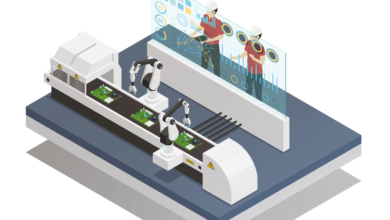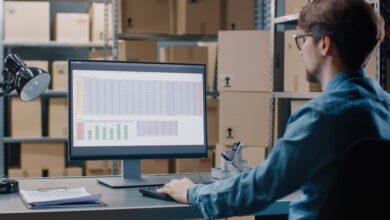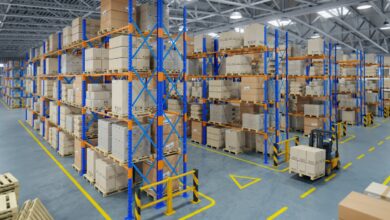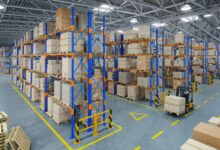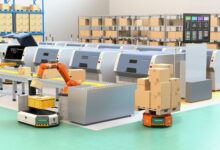Two Brothers Walking Hand in Hand – Factory Simulation with Digital Twin!
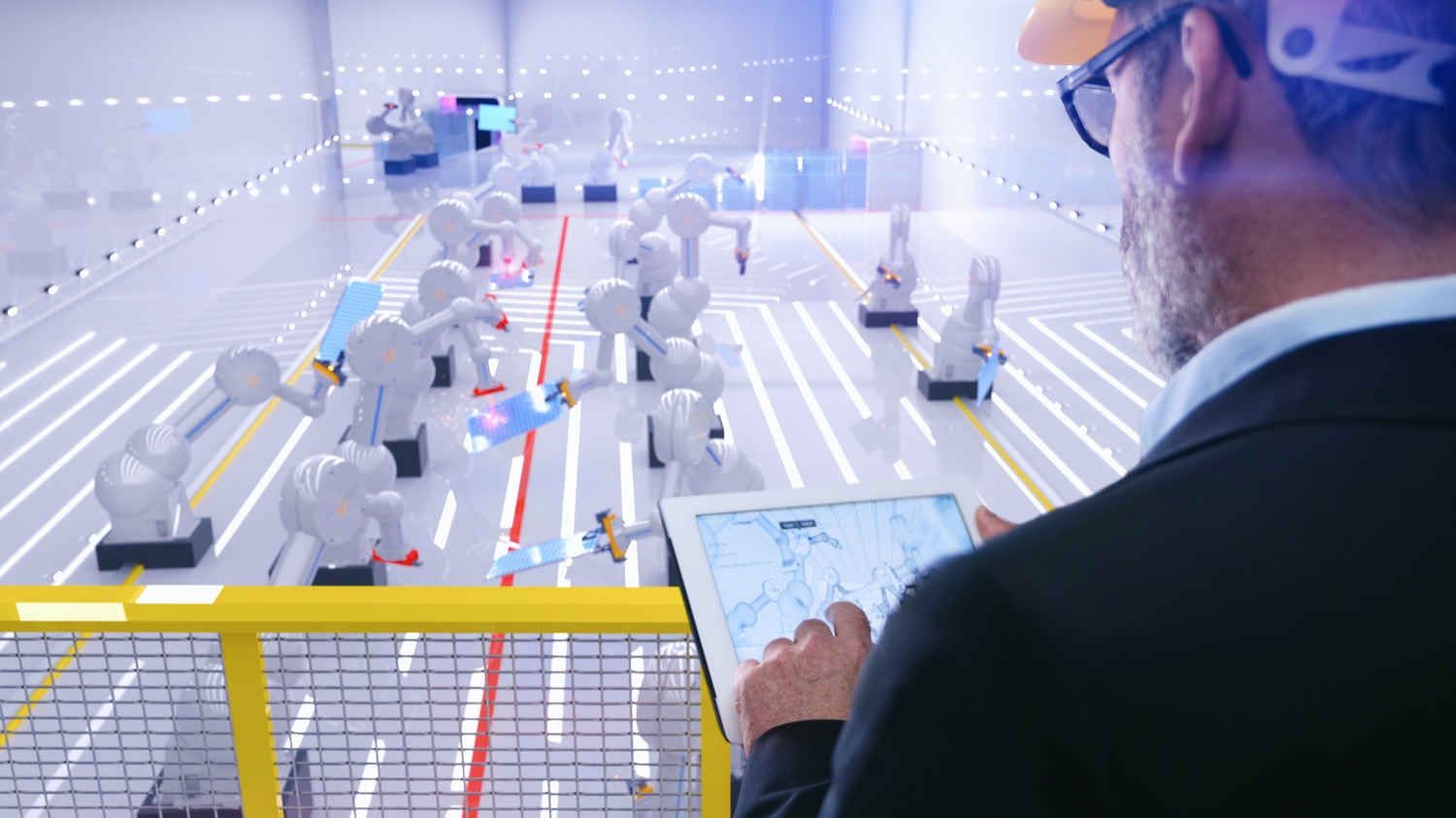
Factory simulation is one of the first things that come to mind when we talk about it. One of the most common applications is creating a digital twin of the factory. To understand the difference between them, we need to ask: What is factory simulation? What is digital twin technology? What is the relationship between factory simulation and digital twin? Let’s examine together.
What is Factory Simulation?
Factory simulation is the process of using a mathematical computer model to understand and improve a real production system. Simulation technology allows processes to be analyzed in a virtual environment where a one-to-one model of production and logistics systems is set up, and what-if scenarios are tested for improvement purposes. This reduces the time and costs of bringing an improvement or new investment into operation and making it work efficiently.
Machines, equipment, materials, transportation equipment, and personnel all work together in a simulation model, allowing the nature of production to be analyzed as realistically as possible. Thanks to the insights provided by these detailed analyses, it is understood in which situations production and logistics operations are disrupted and become bottlenecked. In addition, factory simulation is a cheap and risk-free way to test ideas that come to mind to solve problems because you can run these what-if scenarios and see the results without touching real life.
Once the decision is made on the improvement that will provide the most benefit in the simulation model, this scenario can be put into operation correctly in real life from the first step, allowing you to meet your production goals and quality standards. Similarly, simulation modeling is an ideal tool for testing and verifying lean production kaizens and Six Sigma projects. Once the factory model is set up, changing parameters and simulating new scenarios in factory simulation software is very fast. Ultimately, it helps you gain the insight you need to make better, safer decisions about your factory.
You can watch our video for real-life examples of digital twins.
What is Digital Twin Technology?
To explain what a Factory Digital Twin means simply, it is the continuous reflection of a digital copy identical to the real system as it continuously communicates with the real system. All real-time data generated by the real system is transferred to this digital twin, can be observed through the digital twin, changes made on the digital twin can be transferred to the real system, and the real system can be managed through this copy. In summary, the relationship between the real system and the digital twin is bidirectional. Although it seems like collecting data from production and reporting collected data at first, the real definition of digital twin technology is a technology that can copy, monitor, test possible scenarios, and send directives to the real system for almost any system you can think of. Therefore, it has very high potential, power, and scalability.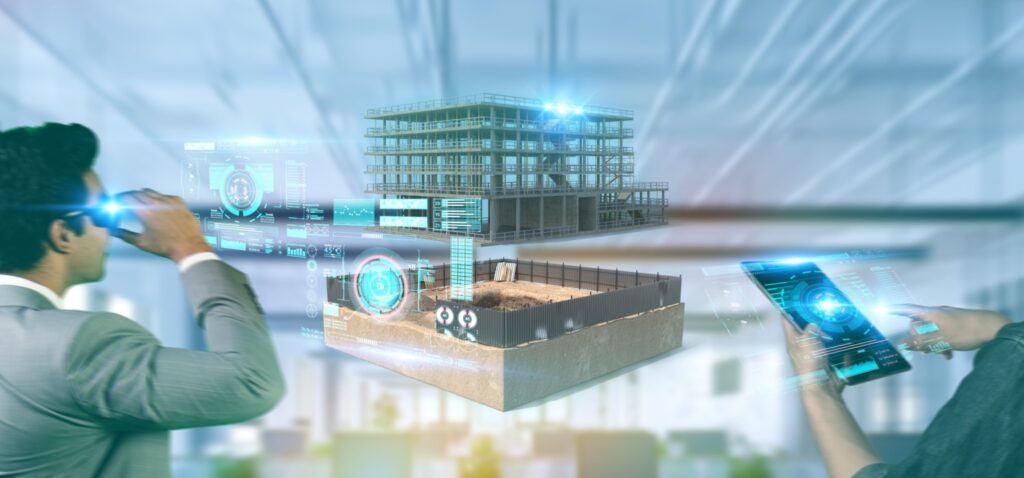
What is the Relationship Between Factory Simulation and Digital Twin?
Every organization has its own problems, priorities, and workflows. We introduced the concept of Digital Twin, which can be integrated with data centers, in the factories of the future: This allows traditional simulation models to continuously work with up-to-date and dynamic data. As we know it, factory simulations have been an existing technology since the 1970s and have been mostly used for one-time studies to answer a question. A simulation model of the system is set up to answer questions such as designing a complex automation system, testing the layout of a new factory, or deciding the appropriate number of operators to work on the production line. Input data to feed this model is collected with long efforts and entered into the system manually. The model is run under different scenarios to thoroughly understand the behavior of the system, improvement scenarios are considered, and tested again in the simulation. Once the decision is made on the best scenario, the job of the simulation model that is set up mostly ends. However, if we consider a simulation model working within a digital twin that communicates continuously with the factory, the situation changes significantly. The simulation model can now access real-time and accurate data without human intervention. Thus, while the digital twin reflects the current situation, the factory simulation integrated with it starts running faster to accurately show what will happen in the future.
With digital twin integrated factory simulation, it becomes much easier to see production one hour, day, week, or month later within an hour, day, week, or month. Future-capable factory management begins to better plan capacity, production scheduling, workforce planning, and energy management.
In summary, factory simulation forms the brain layer within digital twin technology. It supports managers in making the right decisions for the factory to operate at optimum levels. If you are interested in simulation and digital twin topics and want to read more than this article I wrote, you can access additional details from this link.
How is a Digital Twin Created?
We discussed the top-level challenges that Digital Twin offers solutions to above. To address these, many companies have adopted a faster approach to the Digital Twin. Depending on your needs, we can determine the most suitable application path for you. This allows production, integrated with factory simulation within the digital twin, to be easily seen after an hour, day, week, or month. Future-capable factory management begins to better plan capacity, production scheduling, workforce planning, and energy management.
A new production approach is emerging as new perspectives from integrating individual models and software tools into a consistent, semantically linked system throughout the entire life cycle of a facility. Producing such systems and models requires expertise in many software systems as well as in-depth process engineering. Therefore, it is possible to use existing system information and the latest published information to produce an initial digital process twin using simulation software. This is used to design the facility and components called “conceptual design”. At this stage, all information flows into a process flow diagram, which is the basis of the digital process twin. In the next engineering phase, the digital process twin is transferred to the system planning tool to create the basis of the digital plant twin. This is then expanded with other elements specific to the system in turn.
The basic structure of the digital factory twin can then be created using facility engineering tools. After process engineering is completed, all necessary information is transferred to the engineering system in the process control system. In addition, it is matched in a field-level simulation platform so that automation software can be virtually commissioned. There are many benefits to virtual commissioning – while all automation functions can be tested in advance, simulation can also be used to prepare and train facility operators for critical scenarios that can be played out without any risk, especially in the virtual environment, before the real plant. Therefore, training is provided for both standard operations and facility behavior in the event of interruptions.
While it means more than reality, soft sensors are an important application of digital twins in operation. They predict process variables that are not available using a process model to optimize process control as needed. This model is ideally the current digital twin of the facility. Previous experiences have shown that model-based technologies are key for simulations, process optimization, and accurate predictions. The consistent use of production and performance twins with the three digital products mentioned maximizes the economic benefits of a process facility throughout its life cycle. These benefits can be increased by connecting or transferring simulation models to each other.
